Many industries thrived in Pennsylvania over the last 330+ years. However, one of the first was the iron industry.
Pennsylvania’s first iron furnace was constructed in 1716 along the Schuylkill River in present-day Berks County. Over the next few decades, dozens of iron furnaces sprung up all over eastern Pennsylvania, including in a rural area of Lebanon County known today as Cornwall.
Cornwall Iron Furnace was begun by Peter Grubb in 1742. He didn’t know it at the time, but the Cornwall Iron Mines were the largest iron mines east of Lake Superior.
These large mines and the wide expanses of forest around them led Cornwall to be one of the most productive iron furnaces in the US during its 141 years of operation.
One of the most important periods of production was during the American Revolution, when Cornwall Iron Furnace, like many Pennsylvania iron furnaces, made cannons and shot for George Washington’s army.
However, after the end of the Civil War, the profitability of iron quickly dropped with the advent of steel mills in places like Pittsburgh and Bethlehem. So, after losing money for its last decade, Cornwall Iron Furnace was closed down in 1883.
Today, the furnace is open as a museum, run by the Pennsylvania Historical and Museum Commission (PHMC). Cornwall Furnace is one of the best preserved iron furnaces in the state, with only Hopewell Furnace in Berks County rivaling its quality and history.
There are two buildings open for visitors at Cornwall Iron Furnace. The first is the old barn that was used for storing charcoal and other supplies during operation. The dust from charcoal is so fine that the museum has to cover their exhibits to keep them dust free, even though charcoal hasn’t been stored there in over 100 years!
Inside of the old barn is the visitor center, which offers a small museum about the history of Cornwall Iron Furnace, a gift shop, and a short video that’s worth watching. Definitely make sure you take time to visit the museum, as it features a variety of historical items related to the furnace, including several items that were made there.
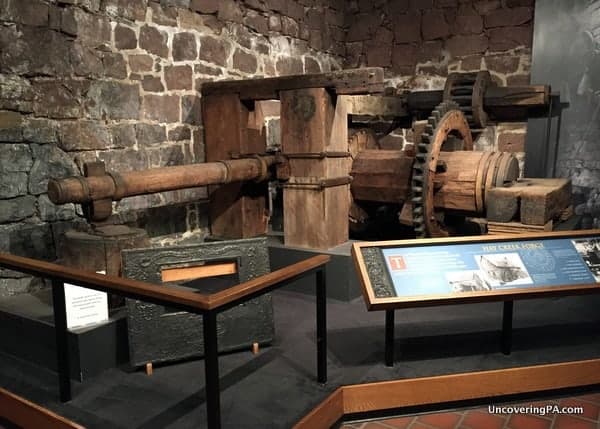
Visits to the iron furnace itself are by guided tour. Tours start above the furnace, in the charging room, where the charcoal, limestone, and iron ore were put into the furnace to heat up the iron ore enough to create the finished iron products. The furnace itself is 32-feet tall, and from the charging room, you can see the hole into which the raw materials were placed to start the process.
From there, tours head down into a room that contains the “Great Wheel.” The wheel is 24-feet around and weighs four tons. As this wheel turned, air was pumped into the furnace to increase the temperature inside. The wheel, along with most of what you see in the room is original and was put in place during expansions in the mid-1800s.
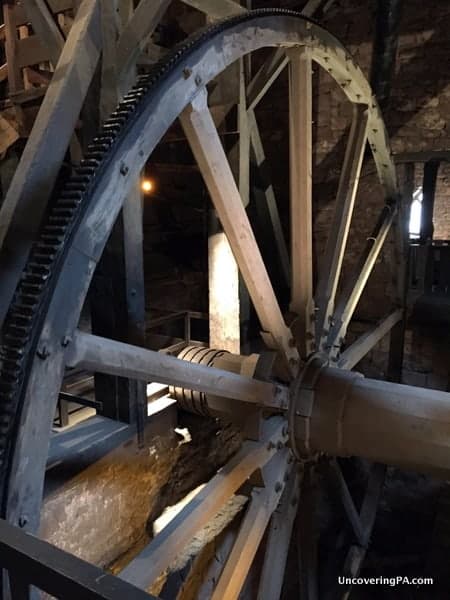
From the Great Wheel, the tour continues past a steam engine from the 1840s. Somewhat amazingly, this engine still works and can still power the wheel in the opposite room. This engine functions in the same way that water would work with the wheel, turning it to create power for the furnace.
The next room takes you to the front of the furnace. In many ways, this room looks like a quaint European church, with stained-glass windows and large fireplace along one wall. However, that fireplace was actually the bottom of the iron furnace, where the molten iron would come pouring out of when the furnace was tapped.
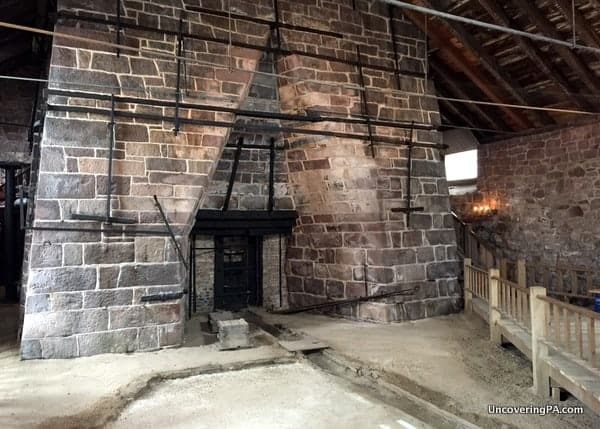
When the ironmaster was making stove plates, cannonballs, or even cannons, the iron would flow into molds and be left to cool. Otherwise, the iron flowed through the troughs in the ground and would harden into iron bars called pig iron. This iron would then be taken to other refineries to be made into a variety of items necessary for daily life.
Back outside, there are several buildings that were once a part of Cornwall Iron Furnace, but are now the property of the retirement community across the street. While not part of the tour, visitors are welcome to drive up to the buildings and look at them from afar.
Of these buildings, the old ironmaster’s home is the most impressive and is well worth getting a closer look. If you do visit, keep in mind that this building is not open to the public and is now home to private apartments for the retirement community.
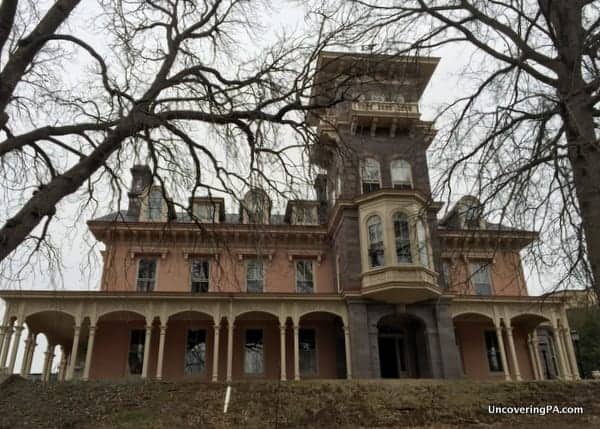
I found my visit to Cornwall Iron Furnace to be quite fascinating. It offers a great look into the history of iron making in PA like you’ll find at other sites like Hopewell Furnace National Historic Site and Curtin Village at Eagle Iron Works.
While Hopewell Furnace has a bit more interesting history and a good collection of outbuildings that explain what life was like for workers, Cornwall has a much more intact and intricate iron furnace. So, don’t think that if you’ve been to one furnace, there’s no reason to visit the other.
Overall, I would definitely recommend a visit to Cornwall Iron Furnace in Lebanon County for anyone interested in the industrial history of PA.
Note: My visit to Cornwall Iron Furnace was hosted by the site. However, the opinions expressed are my own.
Looking for more places to visit in the area? Check out the Middle Creek Snow Geese Migration, Governor Dick Observation Tower, Union Canal Tunnel Park, and the Wolf Sanctuary of PA.

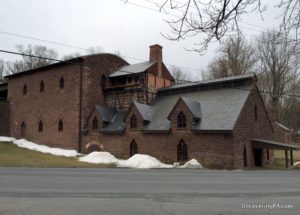
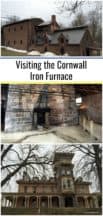
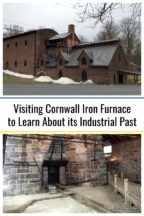
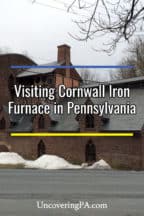
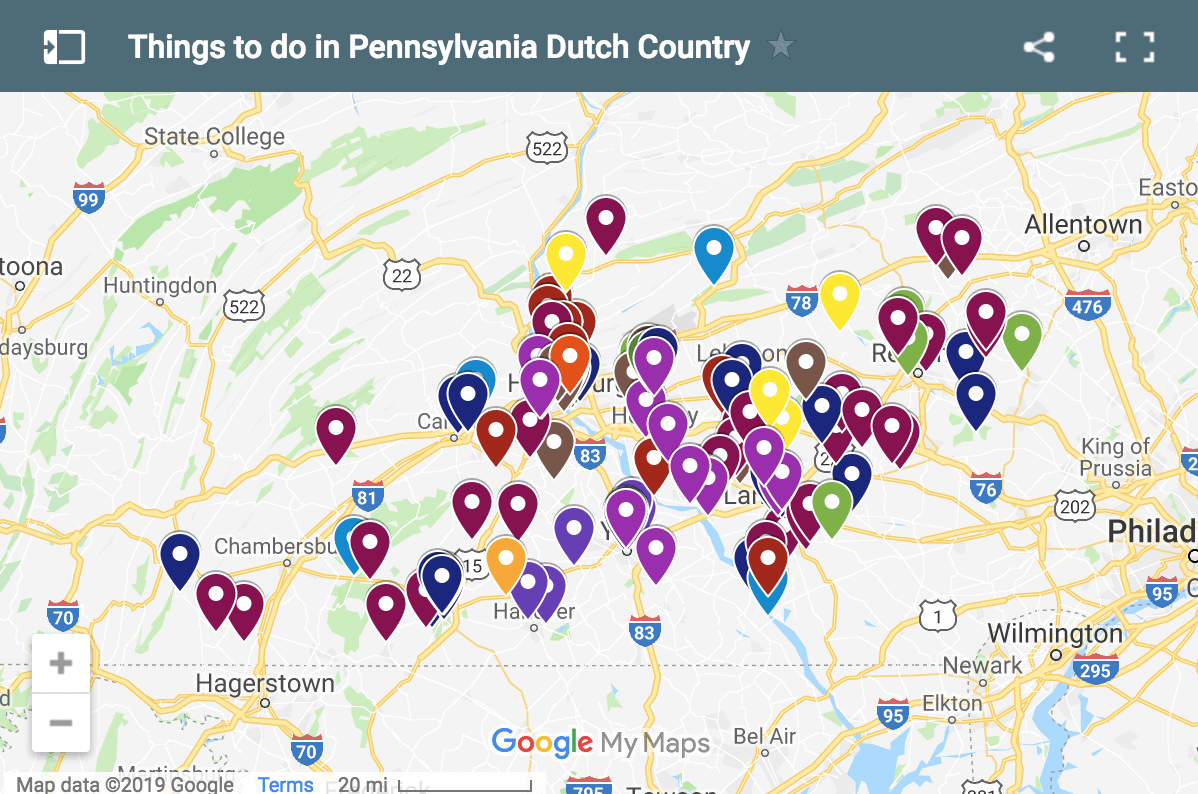 "
"
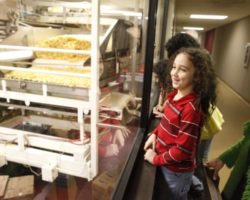

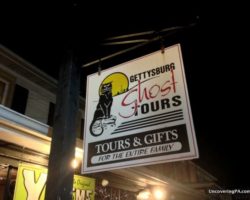

This is a great introduction to Cornwall Iron Furnace. I was administrator there for three and a half years, so I know it intimately. You have painted an accurate picture! I encourage your readers to visit even if they are not interested in industrial history, because it is such an unusual and fascinating remnant from the past.
I’m glad you like the article, John. I definitely think it’s a fascinating place to visit.